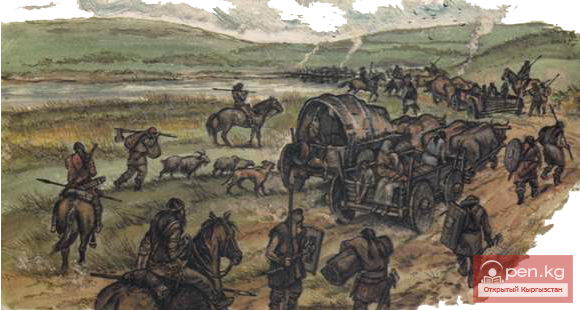
«Priirtysh» Kyrgyz.
In "Taba al-khayvan," Marwazi (12th century), in the section about Turkic tribes, it is stated: "Among them (the Turks) are also the Kyrgyz: a numerous people living between the summer east and the north; the Kimaks live in the north, while the Yagma and Karluks are on the western borders (of these) Kyrgyz, whereas Kucha and Ark are located on the southwestern borders (of these) Kyrgyz. The Kyrgyz usually burned the bodies of the deceased, believing that fire cleanses (from all sins), however, this is their old custom. After they became neighbors with Muslims, these Kyrgyz transitioned to burying the dead."
It can be assumed that the aforementioned cities (Kucha and Ark) were located to the south, or more accurately — to the southeast of the Kyrgyz mentioned here. Al-Marwazi's account of the cremation of the deceased among the Kyrgyz and some other details from the cited source "are evidently borrowed from earlier sources...". In this information, Al-Marwazi might have been referring to the "Priirtysh" Kyrgyz, who previously inhabited the northern regions of Dzungaria. By the time of Al-Marwazi, they had likely moved to the areas of the Pre-Tianshan region, approximately to the valley of the Ili River or somewhere nearby. This position may also be confirmed by archaeological data, according to which Kyrgyz monuments from the regions of Upper Priirtysh and northern Dzungaria closely border Semirechye and Pre-Tianshan (the valley of the Ili River). It is possible that among these Kyrgyz, in the past, there were some representatives of the "Eastern" Kyrgyz; however, by the 12th century, they had evidently already assimilated into the environment of the "Western" Kyrgyz.












































